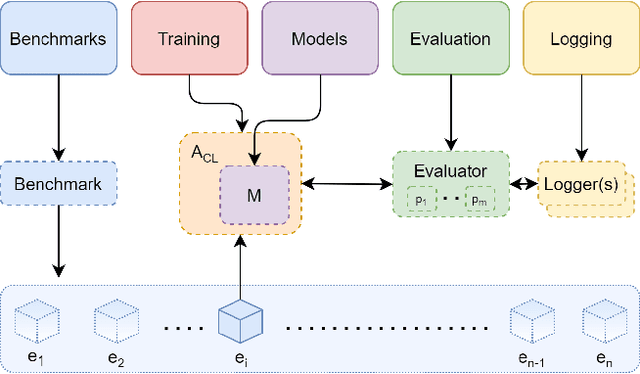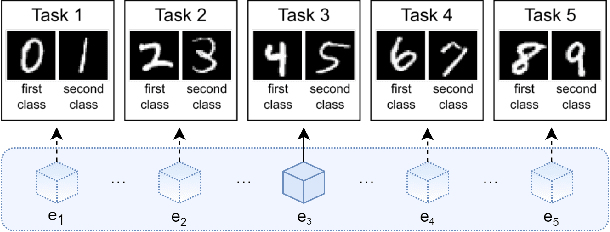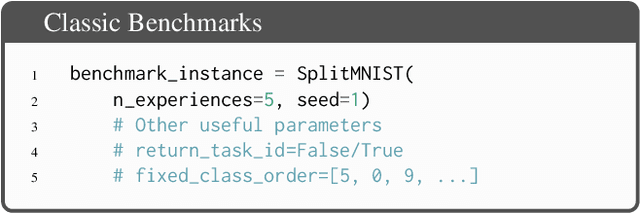Jeremy Forest
Automated Behavioral Analysis Using Instance Segmentation
Dec 12, 2023Abstract:Animal behavior analysis plays a crucial role in various fields, such as life science and biomedical research. However, the scarcity of available data and the high cost associated with obtaining a large number of labeled datasets pose significant challenges. In this research, we propose a novel approach that leverages instance segmentation-based transfer learning to address these issues. By capitalizing on fine-tuning the classification head of the instance segmentation network, we enable the tracking of multiple animals and facilitate behavior analysis in laboratory-recorded videos. To demonstrate the effectiveness of our method, we conducted a series of experiments, revealing that our approach achieves exceptional performance levels, comparable to human capabilities, across a diverse range of animal behavior analysis tasks. Moreover, we emphasize the practicality of our solution, as it requires only a small number of labeled images for training. To facilitate the adoption and further development of our method, we have developed an open-source implementation named Annolid (An annotation and instance segmentation-based multiple animal tracking and behavior analysis package). The codebase is publicly available on GitHub at https://github.com/cplab/annolid. This resource serves as a valuable asset for researchers and practitioners interested in advancing animal behavior analysis through state-of-the-art techniques.
NeuroBench: Advancing Neuromorphic Computing through Collaborative, Fair and Representative Benchmarking
Apr 15, 2023



Abstract:The field of neuromorphic computing holds great promise in terms of advancing computing efficiency and capabilities by following brain-inspired principles. However, the rich diversity of techniques employed in neuromorphic research has resulted in a lack of clear standards for benchmarking, hindering effective evaluation of the advantages and strengths of neuromorphic methods compared to traditional deep-learning-based methods. This paper presents a collaborative effort, bringing together members from academia and the industry, to define benchmarks for neuromorphic computing: NeuroBench. The goals of NeuroBench are to be a collaborative, fair, and representative benchmark suite developed by the community, for the community. In this paper, we discuss the challenges associated with benchmarking neuromorphic solutions, and outline the key features of NeuroBench. We believe that NeuroBench will be a significant step towards defining standards that can unify the goals of neuromorphic computing and drive its technological progress. Please visit neurobench.ai for the latest updates on the benchmark tasks and metrics.
Avoiding Catastrophe: Active Dendrites Enable Multi-Task Learning in Dynamic Environments
Dec 31, 2021



Abstract:A key challenge for AI is to build embodied systems that operate in dynamically changing environments. Such systems must adapt to changing task contexts and learn continuously. Although standard deep learning systems achieve state of the art results on static benchmarks, they often struggle in dynamic scenarios. In these settings, error signals from multiple contexts can interfere with one another, ultimately leading to a phenomenon known as catastrophic forgetting. In this article we investigate biologically inspired architectures as solutions to these problems. Specifically, we show that the biophysical properties of dendrites and local inhibitory systems enable networks to dynamically restrict and route information in a context-specific manner. Our key contributions are as follows. First, we propose a novel artificial neural network architecture that incorporates active dendrites and sparse representations into the standard deep learning framework. Next, we study the performance of this architecture on two separate benchmarks requiring task-based adaptation: Meta-World, a multi-task reinforcement learning environment where a robotic agent must learn to solve a variety of manipulation tasks simultaneously; and a continual learning benchmark in which the model's prediction task changes throughout training. Analysis on both benchmarks demonstrates the emergence of overlapping but distinct and sparse subnetworks, allowing the system to fluidly learn multiple tasks with minimal forgetting. Our neural implementation marks the first time a single architecture has achieved competitive results on both multi-task and continual learning settings. Our research sheds light on how biological properties of neurons can inform deep learning systems to address dynamic scenarios that are typically impossible for traditional ANNs to solve.
Avalanche: an End-to-End Library for Continual Learning
Apr 01, 2021



Abstract:Learning continually from non-stationary data streams is a long-standing goal and a challenging problem in machine learning. Recently, we have witnessed a renewed and fast-growing interest in continual learning, especially within the deep learning community. However, algorithmic solutions are often difficult to re-implement, evaluate and port across different settings, where even results on standard benchmarks are hard to reproduce. In this work, we propose Avalanche, an open-source end-to-end library for continual learning research based on PyTorch. Avalanche is designed to provide a shared and collaborative codebase for fast prototyping, training, and reproducible evaluation of continual learning algorithms.
 Add to Chrome
Add to Chrome Add to Firefox
Add to Firefox Add to Edge
Add to Edge